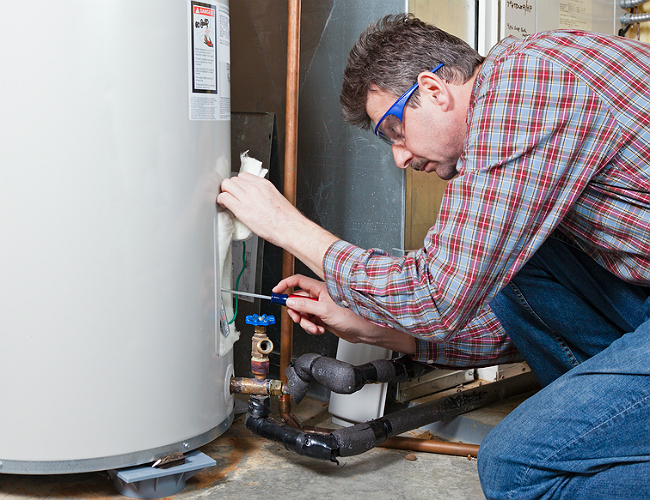Homeowners who have older hot water tanks often complain about foul-smelling water. Most of the time, it is caused by sedimentation at the bottom of the tank. This could result in a number of problems, including bad odor and putrid water taste. Sedimentation could also reduction in water output and pressure. During the summer, bad odor and taste could also likely to happen, due to the faster growth of algae. Regardless of the causes, it is important to quickly diagnose the problem and find quick solutions. Highly aggressive and inappropriate solutions won’t solve the problem at all.
In many cases, the problem could be solved simply by removing the sediment. However, we should have the right tools and expertise to avoid damaging the hot water tank. The obvious way is to empty and flush the hot water tank. We should start by shutting off the power trough the circuit breaker. If the hot water tank uses gas supply, we should make sure that it is completely disconnected from the gas supply. Then, we should turn off the cold water supply and this should be an easy thing to do. We should only close the right valve. Read the instruction manual to make sure that we don’t close the wrong valve.

The next step is to find and open the drain valve and it is usually connected to a faucet. We could attach the faucet to a hose and divert the dirty water to a container or drainage. Make sure that the hose is attached tightly, so we won’t make the working area unnecessarily wet and slippery. If the water tank is located inside the house, we would need a bucket. After the tank is empty, we should refill it again to dissolve the sedimentation. While the tank is refilled, we should make sure that the drain valve stays open. If the drained water starts to look dirty and muddy, then it is a good sign.
When the tank is being drained, it would be dangerous to turn the gas or power back on. This could damage the hot water system. Although it is unlikely that the tank will explode due to a number of safety features, it is a risky thing to do. If we are not sure with what we are doing, it would be a better idea to call a professional plumber or hot water tank technicians. Novices and careless amateurs could simply make things worse. When emptying the tank, we also need slowly pinch the pressure relief valve open. It is a good idea to refill the tank with warm water to make sure that the sedimentation can be flushed more easily.
When the tank has been properly cleaned, we should hear a different, distinctive noise of rushing water into the tank. After the drain valve is closed and everything returns back to normal, we could allow the power or gas to come back on. We should monitor the performance of the tank after it’s been drained. The temperature should rise slowly and steadily. At first, the water could still slightly dirty, but it will be cleared afterwards. It is important to drain and clean the hot water tank before winter. Cleaning and flushing hot water tank is more difficult to do during winter.

